Stop Wasting Your Perfume: A Pro’s Guide to All-Day Scent
I can still vividly recall the scent of my grandmother’s dressing table. It was this perfect blend of cold cream, pressed powder, and a single, elegant perfume she wore faithfully for decades. A light spritz in the morning would somehow stick around until evening. It was never overpowering, just… there. A quiet signature of her presence.
In this article
It taught me that the best scents don’t scream; they whisper. Years later, after getting deep into the chemistry of fragrance and working with the pros, I finally figured out her secret. It wasn’t magic, and it definitely wasn’t about the price tag. It was pure craft. It was about knowing how perfume really works with your body and your environment.
So many of us get frustrated when a pricey fragrance just disappears by lunchtime. The truth is, making a scent last is a skill you can learn. It’s a mix of prep work, smart application, and a little bit of science. Let’s dive into the techniques that will make any fragrance in your collection perform at its absolute best.
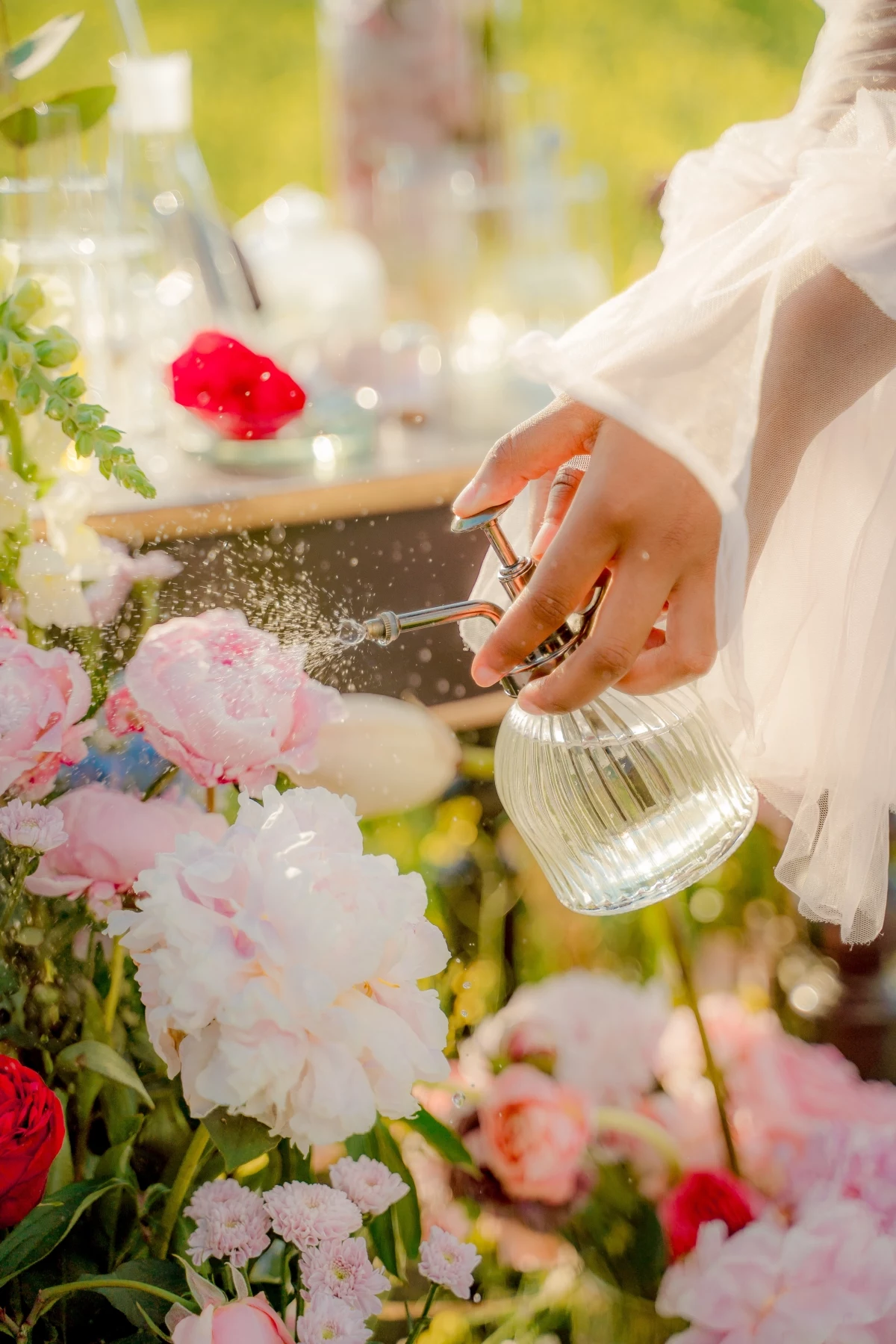
First, Know What You’re Working With
Before you even think about spraying, you have to understand what’s actually in the bottle. A perfume isn’t just one smell; it’s a story that unfolds over time. Grasping this is the first step to becoming a master of your own scent.
The Scent Pyramid: What You’re Really Smelling
Think of a fragrance as a three-act play. Each act has its own stars that get their moment on stage.
- Top Notes: This is the opening act. It’s the bright, flashy scent you smell the second you spray—think citrus, mint, and light fruits. These are made of tiny molecules that evaporate fast, usually gone in 15-30 minutes. They make a great first impression but aren’t built to last.
- Middle (or Heart) Notes: Once the top notes bow out, the main story begins. This is the heart of the fragrance, featuring notes like florals (rose, jasmine) or warm spices. This is the character you’ll live with for the next few hours, forming the true identity of the scent.
- Base Notes: This is the grand finale and the foundation of the whole show. These are heavy, rich molecules like sandalwood, amber, musk, or vanilla. They take a while to show up but stick around for the long haul, often for eight hours or more. They give the fragrance its depth and staying power.
A quick tip: If you’re hunting for a long-lasting fragrance, pay close attention to the base notes. A scent that’s rich in woods and resins will naturally outlast one that’s all light citrus. Not sure what’s in your bottle? Look it up on a resource site like Fragrantica—it breaks down the entire pyramid for almost every perfume ever made. It’s a game-changer.
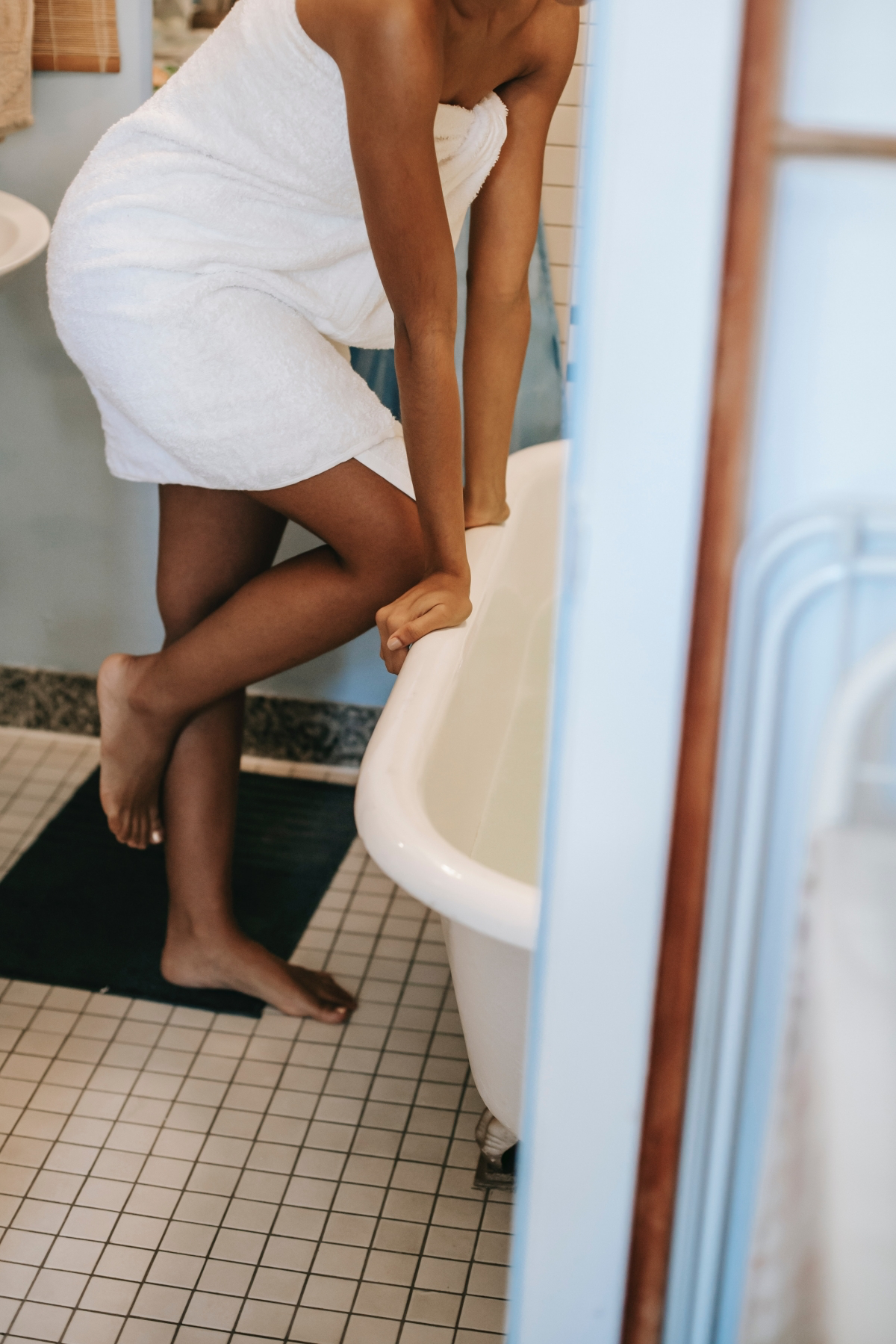
What’s in a Name? Cologne vs. Parfum
The label on your bottle is a huge clue to its endurance. The difference is simply the concentration of pure perfume oil in the alcohol base.
You have your Eau de Cologne (EDC), which is super light with only about 2-4% oil. It’s refreshing but will probably be gone in a couple of hours. Then there’s Eau de Toilette (EDT), a very common choice with 5-15% oil, giving you a solid three to five hours of wear. Moving up, Eau de Parfum (EDP) is where all-day wear really starts, containing 15-20% oil for a good six to eight hours of scent. And at the top is Parfum (or Extrait de Parfum), a powerhouse with 20-30% oil. It’s the most expensive and lasts the longest, often applied by dabbing rather than spraying because it’s so potent.
The Real Secret: It All Starts with Your Skin
Applying perfume to dry skin is like trying to plant a garden in the desert. It just won’t stick. The single most important trick for making a fragrance last has nothing to do with the perfume itself and everything to do with prepping your skin.
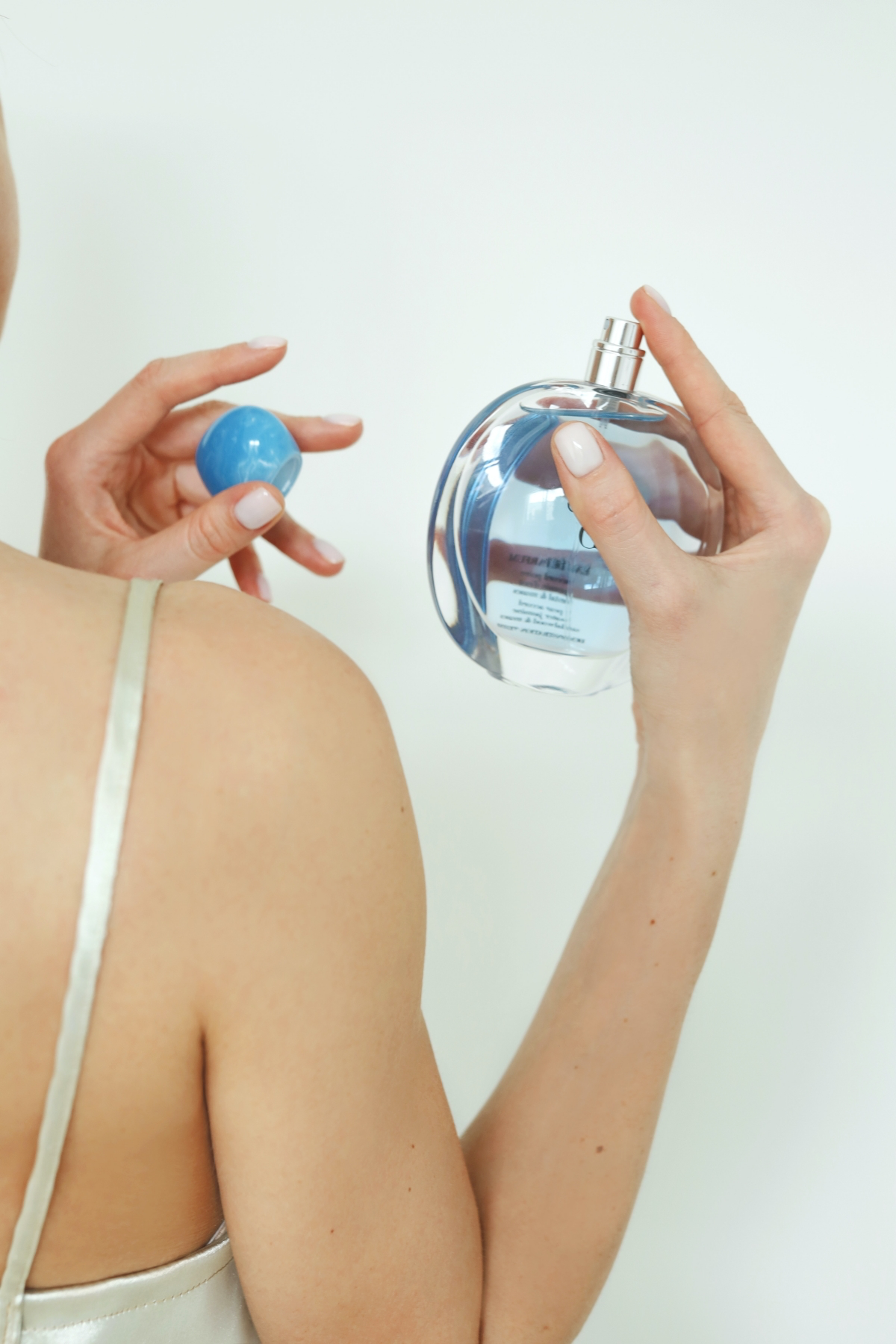
Hydration is Everything
Moisturized skin gives fragrance molecules something to cling to. The oils in lotion create a perfect binding surface, dramatically slowing down how quickly the scent evaporates. This is why people with naturally oily skin tend to hold fragrances longer. For the rest of us, creating that hydrated base is absolutely essential.
Here’s the method I swear by:
- Start with a warm shower. The steam opens up your pores and makes your skin ready to absorb moisture.
- Pat your skin mostly dry, leaving it just a little damp.
- Apply a rich, unscented moisturizer all over, but especially where you plan to spray. You don’t need anything fancy. A big tub of something like CeraVe or Cetaphil, which you can get for around $15 at any drugstore, is perfect. For a serious boost on your pulse points, a tiny dab of Vaseline or Aquaphor works wonders. It’s an old-school trick, but it’s pure genius.
- Wait! This is the step everyone skips. Let the lotion fully sink in for at least five to ten minutes. You want your skin to feel hydrated, not greasy. Applying perfume immediately just creates a soupy mess.
Honestly, just doing this can easily double the life of your fragrance.
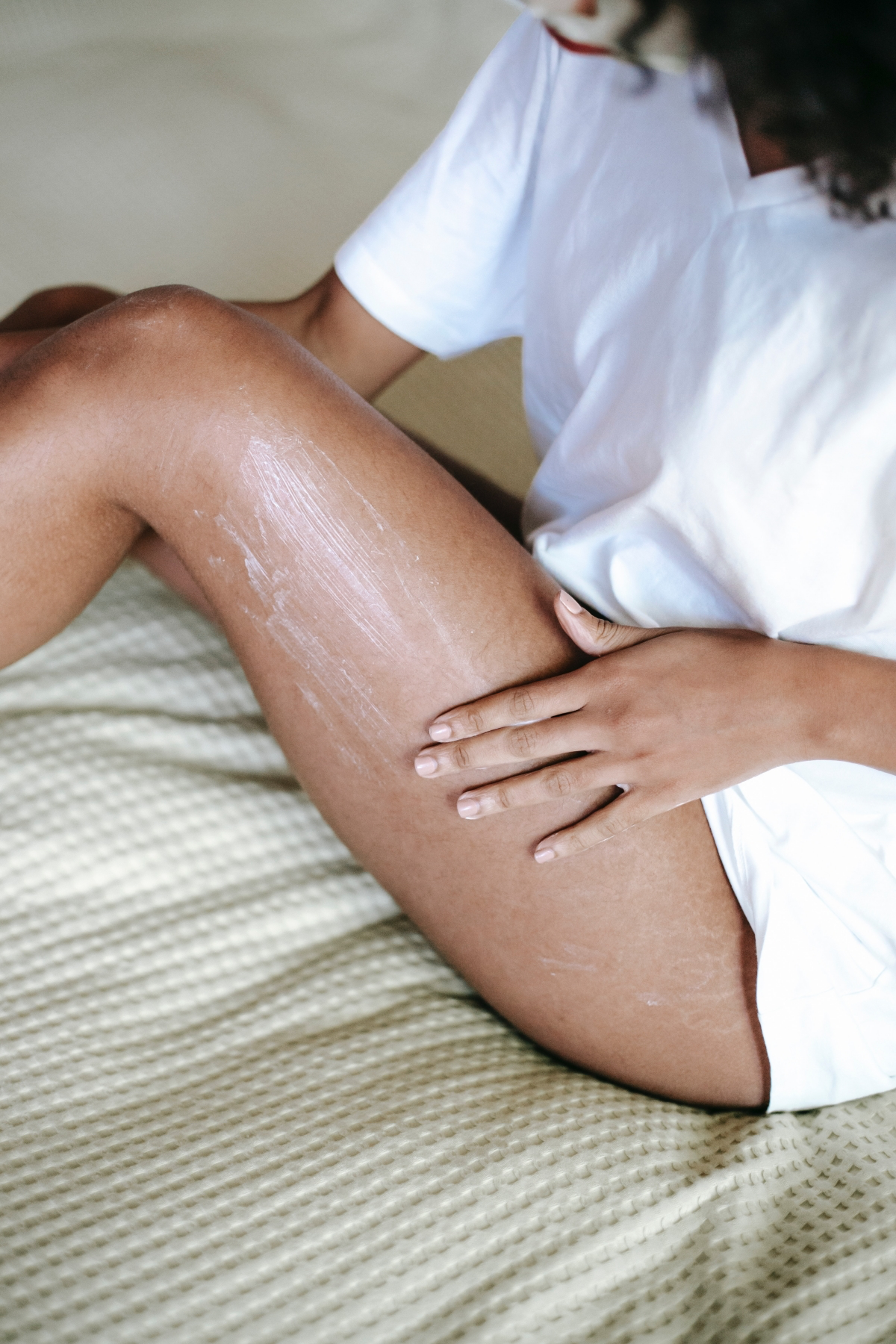
How to Apply Perfume Like a Pro
Okay, your skin is prepped and ready. Now, let’s talk application. Where and how you spray makes all the difference.
Pulse Points and… How Much?
Pulse points are your best friends because they radiate heat, which helps diffuse the scent. The classics are your wrists, behind your ears, and the base of your throat. But the pros have a few other spots up their sleeves: the inner elbows and behind the knees. As you move, these spots create a beautiful, subtle scent trail.
But here’s the most important rule: don’t go crazy! You don’t need to spray every single pulse point. A good rule of thumb is to start with 2-3 sprays total. Maybe one on your wrists (and just tap them, don’t rub!) and one at the base of your throat. You want to create a pleasant scent bubble, not a toxic cloud.
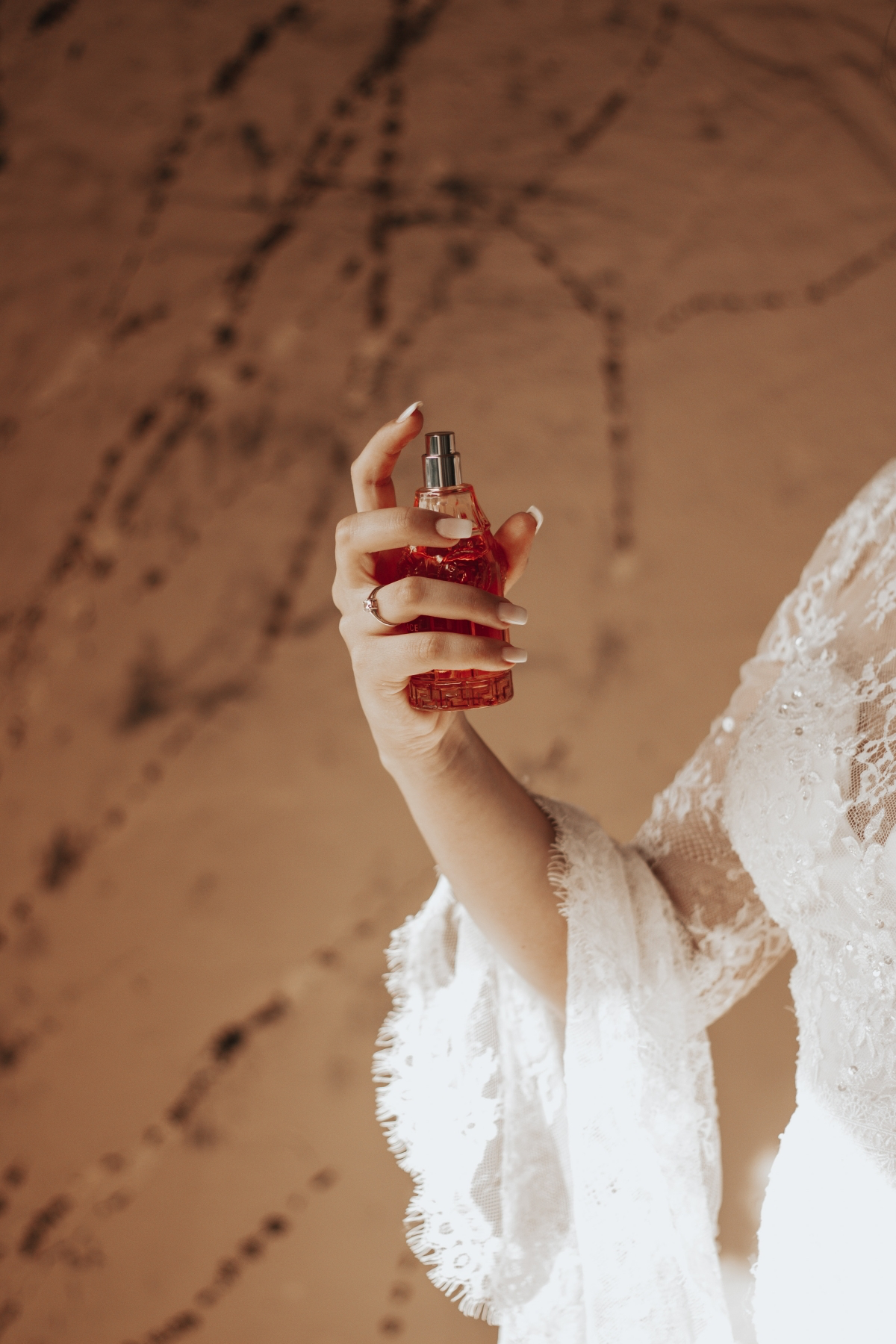
Common Mistakes to Avoid
I see these all the time, and they’re fragrance killers.
- Rubbing your wrists together. Please, stop doing this! It crushes the fragile top and middle notes, messing up the fragrance’s structure and making it fade faster. Just spray and let it air dry.
- The “Spray and Walk” method. It looks glamorous, but walking through a cloud of perfume is incredibly wasteful. Most of that expensive juice ends up on your floor and clothes, not your skin. Direct application is always better.
- Storing it in the bathroom. This is a big one. The heat and steam from your shower will literally cook your perfume, breaking down the delicate oils and ruining it over time. Store your bottles in a cool, dark place, like a dresser drawer or a closet.
Layering and Scenting Your World
For truly epic longevity, you can layer. The easiest way is to use a body wash and lotion from the same fragrance line. For a more creative approach, you can pair scents. Try using a simple vanilla-scented body butter before spritzing on a spicy perfume that has vanilla in its base notes. Or a sandalwood lotion under a floral scent. It can really make certain notes pop and create a signature scent that’s uniquely yours.
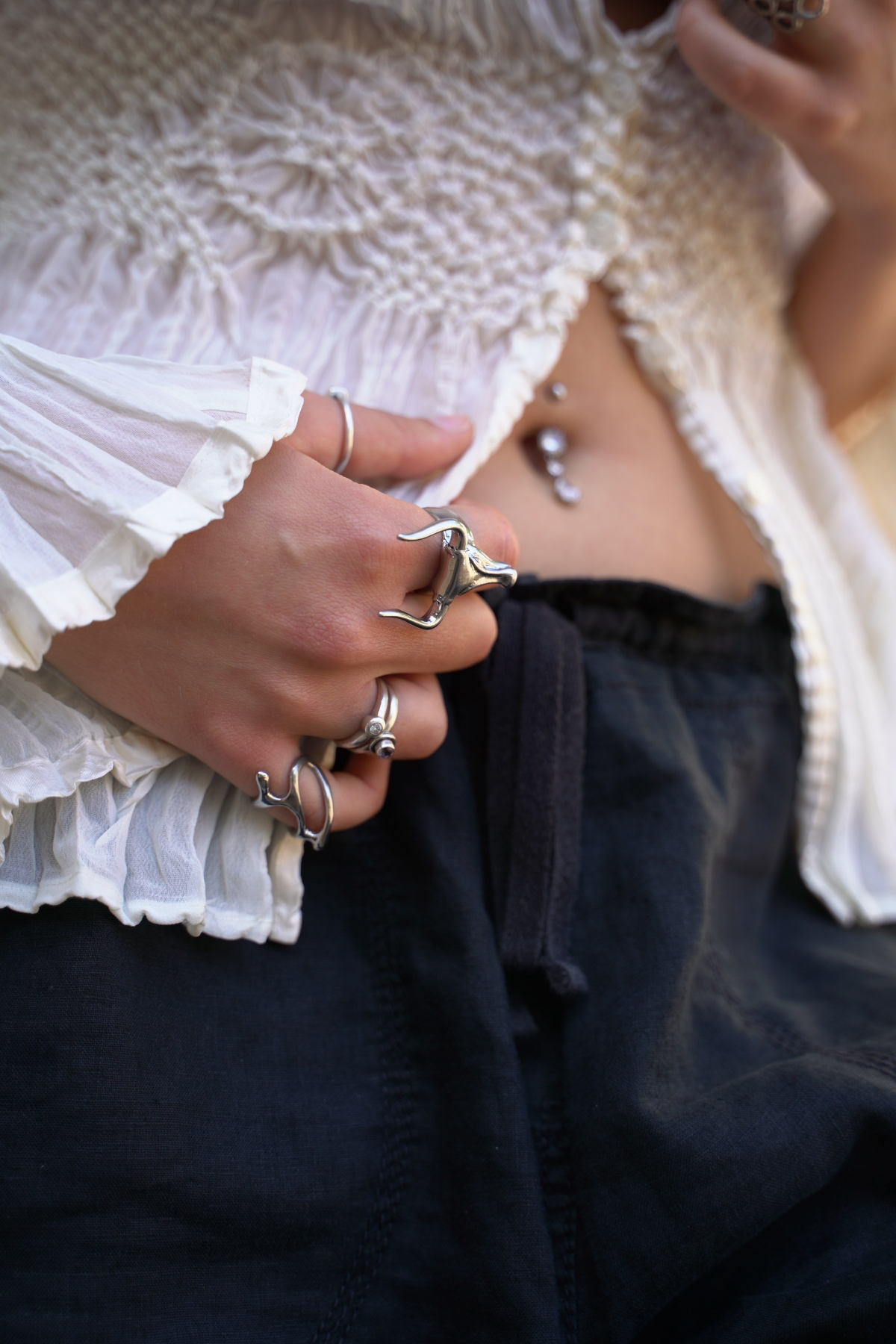
You can also scent your hair and clothes, but do it right. Perfume has alcohol, which can dry out your hair. The safe way? Spray your hairbrush, let it air out for a second, then brush it through the ends of your hair. For clothes, you can lightly mist a scarf or the lining of a jacket. Just be sure to spray from about 8-10 inches away and test on an inconspicuous spot first to make sure it doesn’t stain delicate fabrics like silk.
Have You Gone “Nose Blind”?
Here’s something you really need to know. After a few hours, you might think your fragrance has vanished. But has it? Probably not. It’s a phenomenon called olfactory fatigue, or “nose blindness.” Your brain simply gets used to the scent and starts filtering it out so it can detect new, potentially dangerous smells.
Before you reapply, ask a friend if they can still smell your perfume. Chances are, they can. Realizing this will save you from accidentally over-spraying.
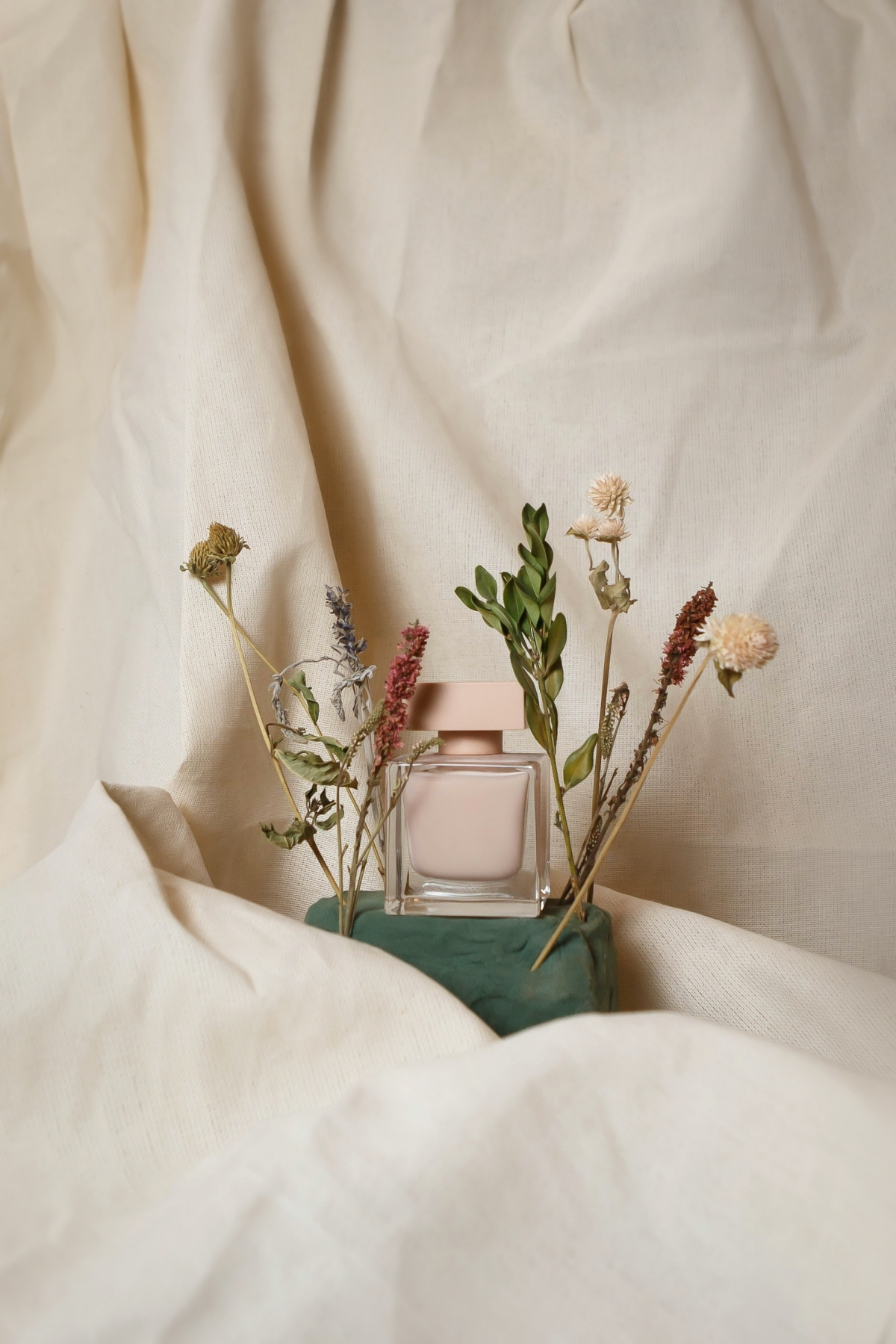
By the way, if you do need a midday boost, a travel atomizer is your best friend. A single, light spray on your inner elbows is usually all you need to revive the scent without overwhelming yourself or others.
Your First Challenge
Feeling a little overwhelmed? Don’t be. Just focus on one thing this week: moisturize before you spray. That’s it. See what a difference that one small change makes. I think you’ll be pleasantly surprised.
Galerie d’inspiration
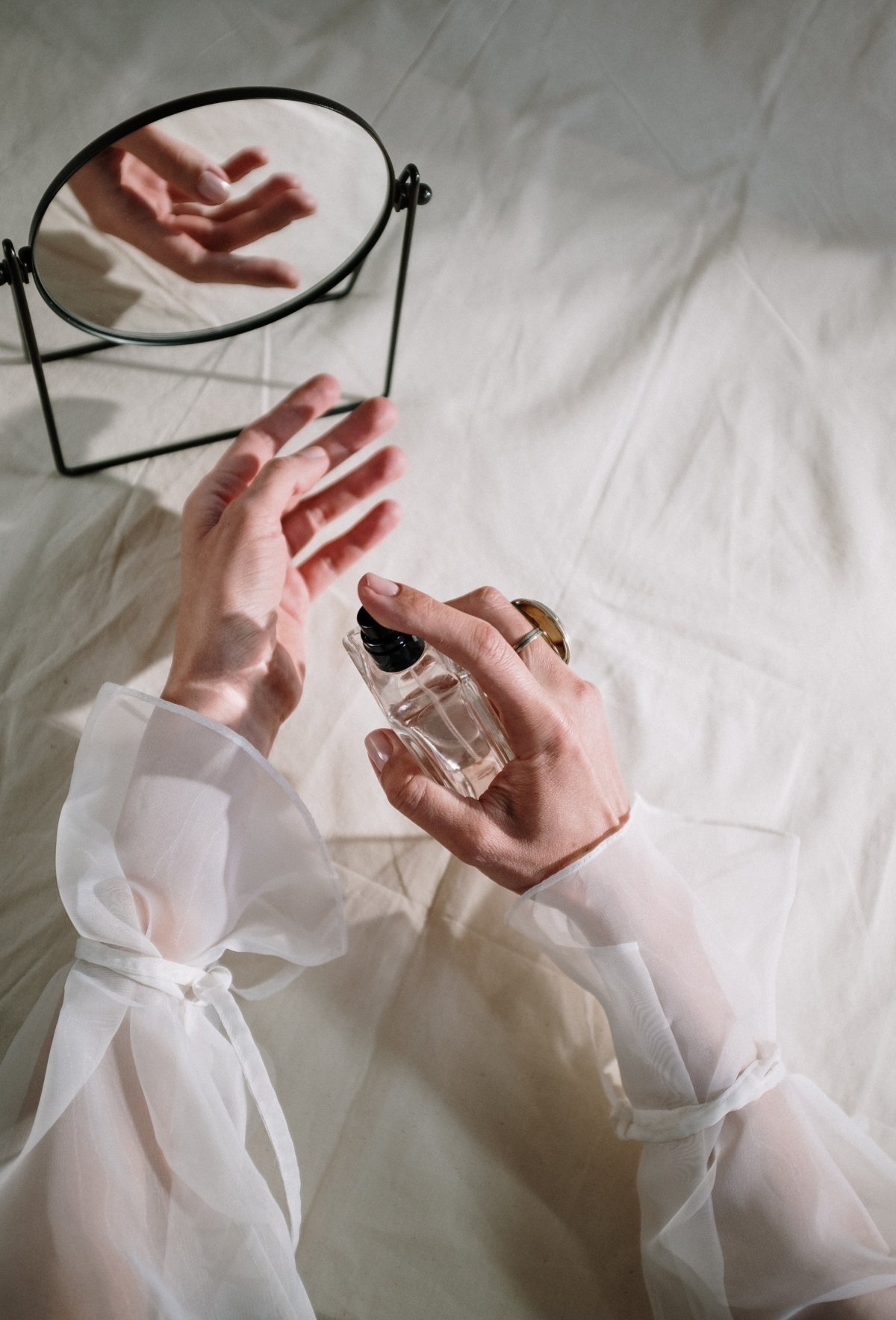
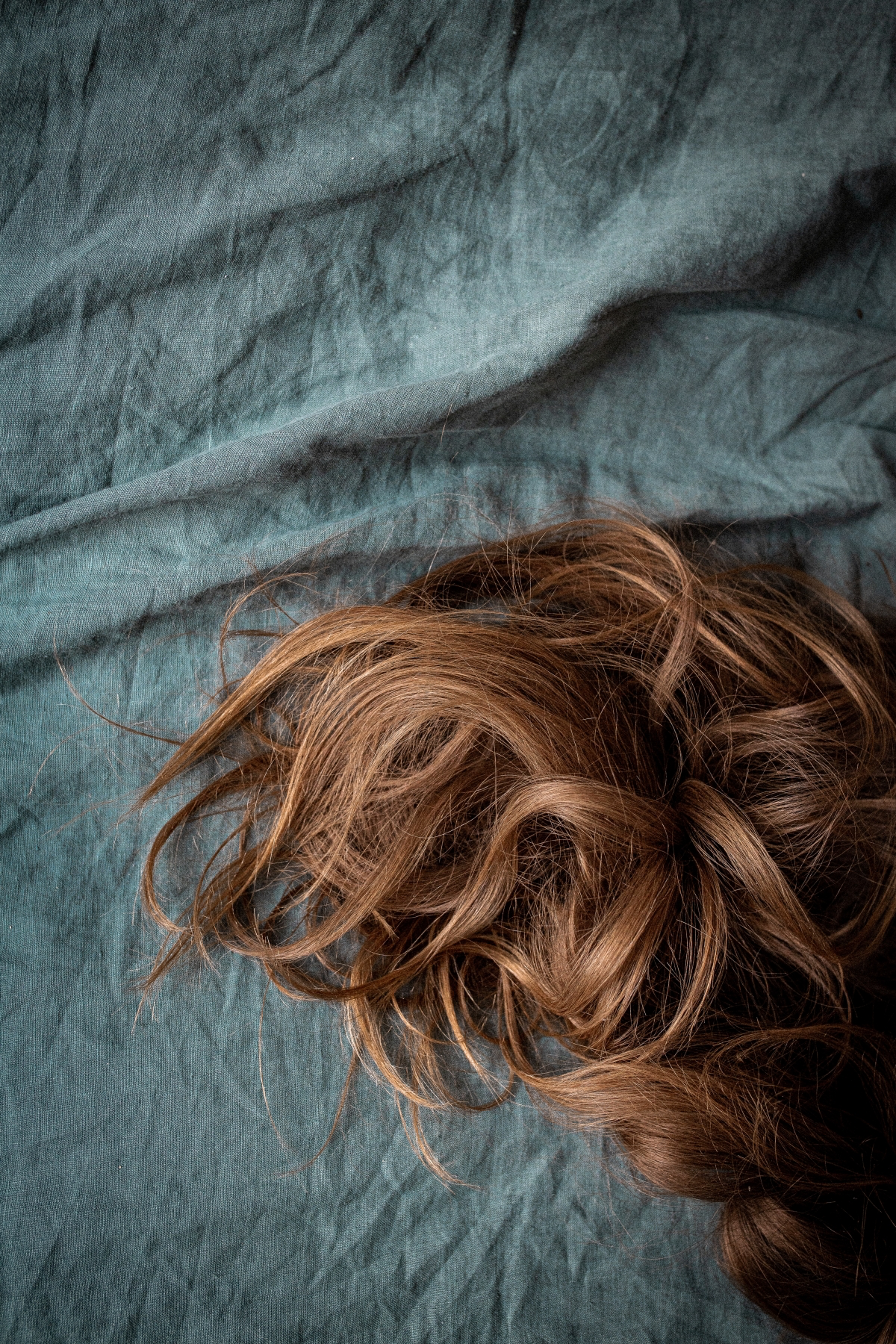
The canvas for your scent is just as important as the scent itself. Perfume clings best to hydrated skin, as dry skin tends to absorb the fragrance oils too quickly. For a long-lasting effect, prepare your pulse points before you spray.
- Apply a layer of an unscented moisturizer, like CeraVe Moisturizing Cream, to create a perfect base.
- For an even more potent hold, dab a tiny amount of Vaseline or Aquaphor on your wrists and neck. The occlusive barrier slows down the evaporation of the perfume.
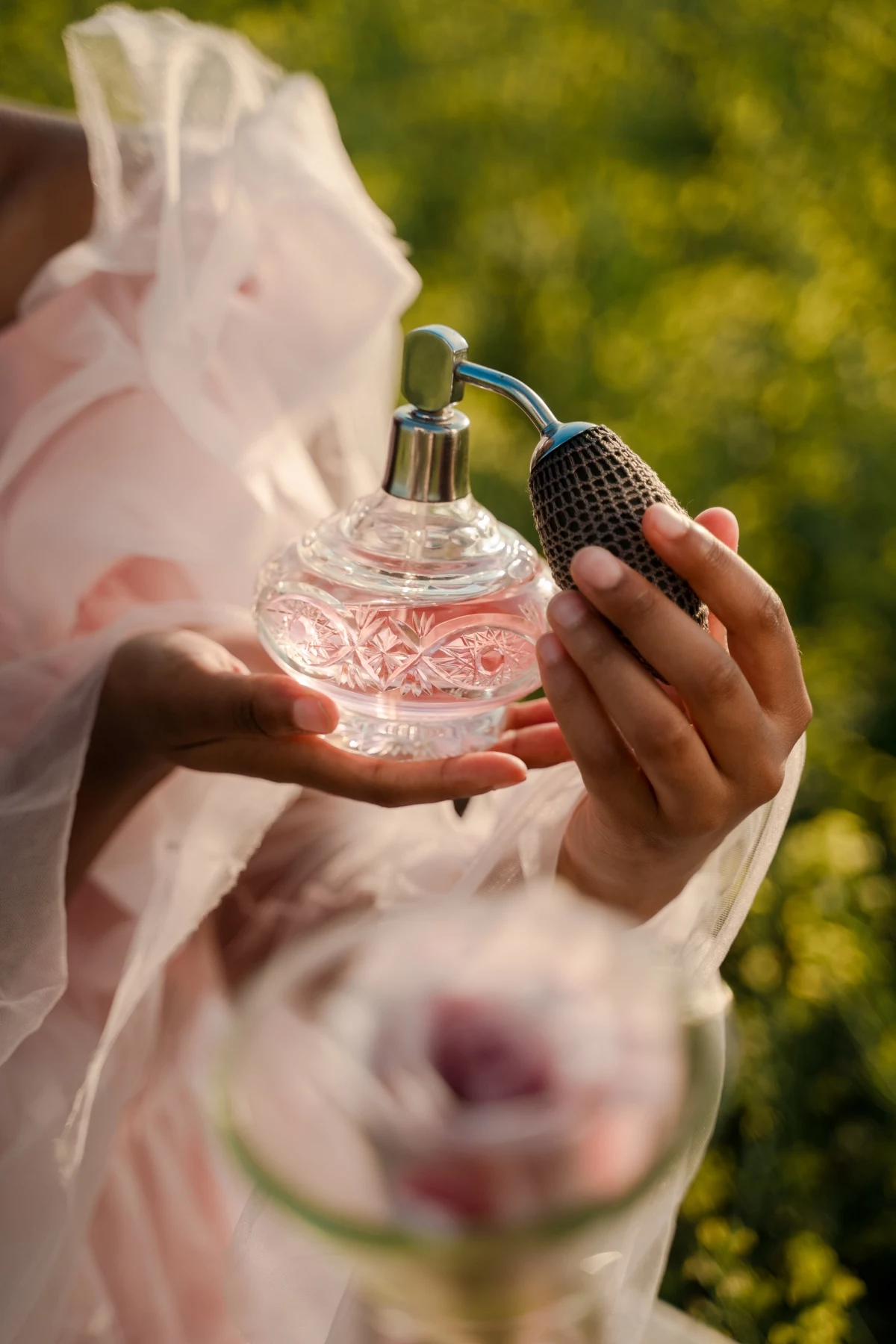
Eau de Toilette (EDT): Contains about 5-15% pure perfume essence. It’s lighter, fresher, and ideal for daytime, but its top notes fade more quickly, typically lasting 3-4 hours.
Eau de Parfum (EDP): Features a higher concentration of 15-20% essence. This gives it more depth and a longer lifespan on the skin, often lasting 6-8 hours. For all-day wear, investing in an EDP version of your favorite scent is a simple upgrade.










